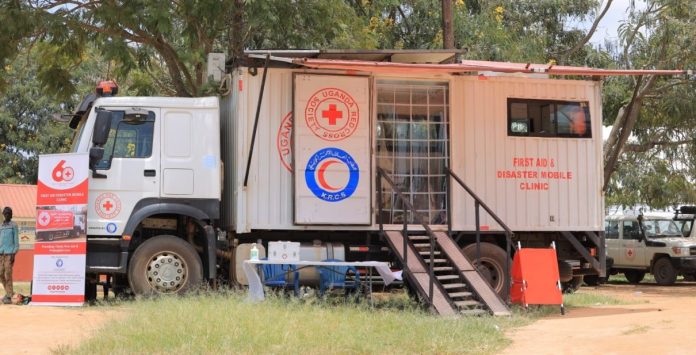Uganda is experiencing a transformative wave in its healthcare sector, powered by innovative health technology. From mobile clinics reaching remote communities to AI-powered diagnostics, these advancements are significantly improving healthcare accessibility and quality across the nation, especially in underserved rural areas. This HealthTech Uganda boom is not just about adopting new tools; it’s about reshaping the very fabric of healthcare delivery.
Mobile Clinics on the Move: Extending Reach
One of the most significant advancements in HealthTech Uganda is the rise of mobile clinics. These specially equipped vehicles deliver essential medical services directly to the doorsteps of rural communities. Many of these populations face considerable geographical and financial barriers that make accessing traditional healthcare facilities challenging. For example, in March 2024, the Uganda Red Cross Society launched its first First Aid and Disaster Mobile Clinic, designed to provide pre-hospital care and stabilize casualties during emergencies, particularly in refugee settlements. Research indicates that mobile health clinics are a critical solution for addressing healthcare disparities by offering primary and preventive healthcare, including diagnostic testing and chronic disease management. The success of mobile clinics lies in their flexibility and ability to adapt to diverse community needs, making them a cornerstone of improved rural healthcare access.
AI in Action: Enhancing Diagnostics and Efficiency
Beyond mobile accessibility, the integration of artificial intelligence (AI) is rapidly revolutionizing diagnostics and operational efficiency within Uganda’s health system. AI in healthcare is proving invaluable for early disease detection, particularly in areas like radiology and pathology. While global statistics show rapid AI adoption in healthcare, with 66% of physicians using health AI in 2024, up from 38% in 2023, Uganda is also seeing a nascent but growing integration. Reports indicate that 45% of businesses in Kampala, including healthcare, have adopted some form of AI technology for data analysis and customer service, with potential for expansion into diagnostics. AI-powered tools can analyze medical images and predict disease outbreaks, crucial in resource-constrained settings where specialist expertise might be limited. The potential of AI in healthcare to streamline administrative tasks also frees up medical professionals to focus more on patient care, significantly enhancing overall productivity and improving patient outcomes across the HealthTech Uganda landscape.
Challenges and the Path Forward
Despite these remarkable strides in HealthTech Uganda, challenges remain. These include limited digital infrastructure in very remote areas and the need for enhanced digital literacy among both healthcare providers and patients. While nearly 30% of Ugandans have internet access, efforts are underway to bridge this gap. Initiatives like the Uganda Digital & Financial Literacy ToolKit by NITA Uganda, UNCDF, and Hive Colab aim to train 90,000 women and youth in digital literacy, directly impacting the adoption of digital health solutions. Securing sustainable funding for these innovative solutions is another hurdle; however, the Ugandan digital health ecosystem has seen US$6.59 million in venture capital funding raised through 7 deals from 2020-2025, with programs like the AI4Health Incubation Grant actively supporting local innovators. Continued investment and collaborative efforts will further solidify the gains made in rural healthcare access and cement Uganda’s position as a leader in digital health innovation.
The fusion of mobile accessibility and intelligent technology positions Uganda as a leader in innovative healthcare delivery, promising a healthier future for all its citizens. This robust HealthTech Uganda ecosystem, driven by advancements like mobile clinics and AI in healthcare, is set to transform the lives of millions by making quality medical attention more accessible and efficient than ever before.




